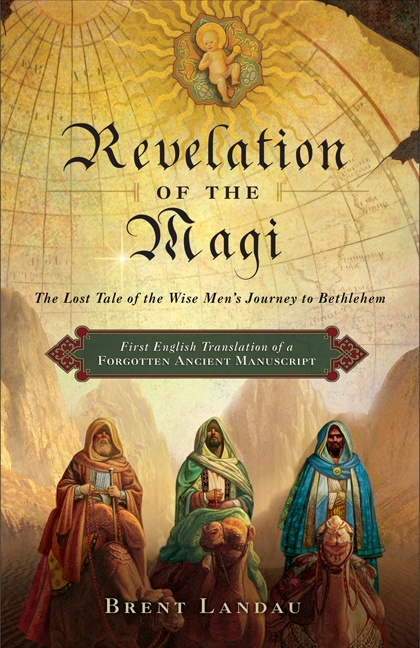The Revelation of the Magi
November sees the release of a new book by Brent Landau (University of Oklahoma) on a rarely-studied CA text. Revelation of the Magi: The Lost Tale of the Wise Men’s Journey to Bethlehem (from Harper Collins) features an English translation of the text with some commentary. It is one of two projects deriving from Brent’s doctoral dissertation; the second is a complete critical edition, to be published in Corpus Christianorum Series Apocryphorum.
 This particular book is directed at a popular audience. The goal of it is primarily to provide a readable version of the text. The introductory materials, then, are somewhat sparse but are enough to set the text in its historical and literary contexts. Brent also adds some details about how he came to be interested in the text and his efforts to discover more about it.
This particular book is directed at a popular audience. The goal of it is primarily to provide a readable version of the text. The introductory materials, then, are somewhat sparse but are enough to set the text in its historical and literary contexts. Brent also adds some details about how he came to be interested in the text and his efforts to discover more about it.
He notes that the canonical story of the Magi, from the Gospel of Matthew, leaves readers with many questions about these enigmatic figures. Where exactly are they from? How did they come to know about the prophecy of the star? What are their names? How many Magi are there? And why are they called “magi”? The Revelation of the Magi answers all these questions.
Among the “revelations” found in this text is the Magi’s origins in the land of Shir. They derive ultimately from the line of Seth, the son of Adam. The prophecy of the star comes from Adam himself who bequeathed it to Seth, according to a testament of Adam embedded within the narrative. Also of interest is the notion that Christ was the source of numerous revelations to various cultures throughout human history. The text’s ecumenism is attractive theology for our day and age (though still essentially supersessionist). Revelation of the Magi concludes with a legend of the apostle Thomas arriving in Shir where he relates the events of Jesus’ life and baptizes the Magi.
The Revelation of the Magi is extant in a single eighth-century Syriac manuscript from the Vatican library. Brent believes the text was composed sometime in the late second or early third century, primarily because the Thomas legend is likely a third-century addition to the text. The Revelation was also known to the writer of a fifth-century Latin commentary of Matthew known as the Opus Imperfectum in Matthaeum; Brent provides a translation of the relevant section of this text in an appendix.
This is an excellent little book for anyone interested in the CA, particularly infancy traditions. It is great to see also the interest shown by Harper Collins in disseminating this text to a wide audience.
